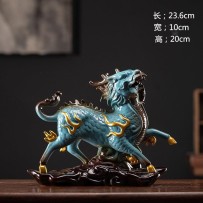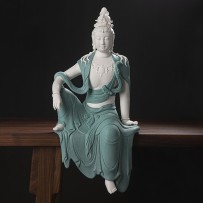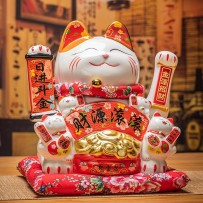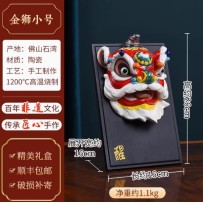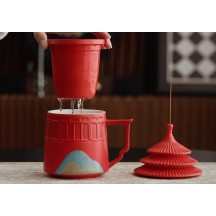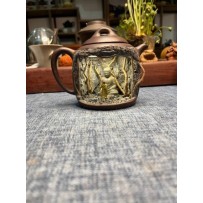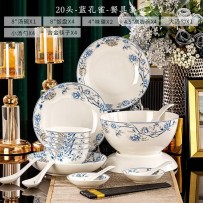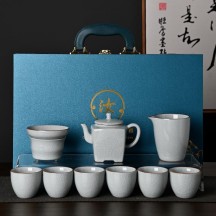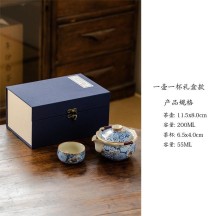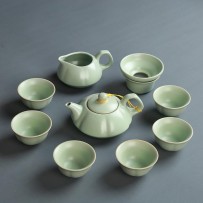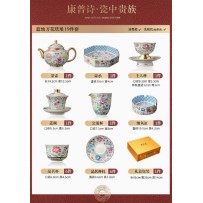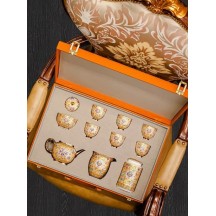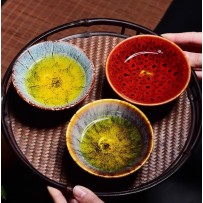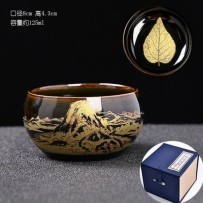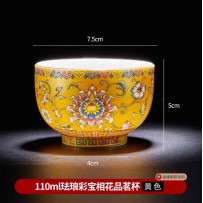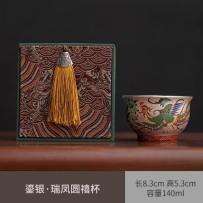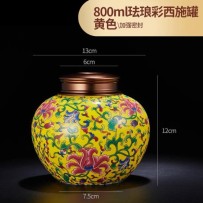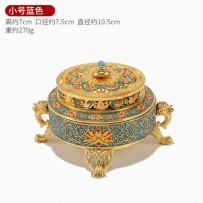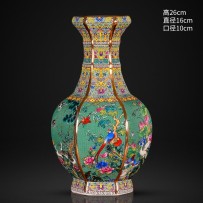The qilin was the most auspicious animal that ancient Chinese people hoped would appear. Its presence signified the happiness of an era. Therefore, people at that time wished for the qilin to always accompany them, bringing luck and brightness, while dispelling misfortune
Ancient Ceramics
Guan Yu, courtesy name Yunchang, originally named Changsheng, was from Xieliang in Hedong Commandery, under the jurisdiction of Sili. He was a general during the late Eastern Han Dynasty and a key confidant of Liu Bei. He was known as “a match for ten thousand enemies
Guanyin Bodhisattva is one of the Four Great Bodhisattvas in Chinese Buddhism. The belief in Guanyin has had a profound influence in China, giving rise to various folk legends about the bodhisattva. One widely circulated story is that Guanyin was originally Princess Miaoshan, the third daughter of King Miaozhuang of the Kingdom of Xinglin
The Lucky Cat is usually made of ceramic and is typically white
The Awakening Lion is a folk culture that combines martial arts, dance, music, and other elements, symbolizing good fortune and auspiciousness. It represents strength, bravery, and vitality. The meaning of the Awakening Lion is rich and it is widely popular among the people, with its fame spreading overseas. Wherever there are Chinese communities, there is the Awakening Lion.
The Awakening Lion is a folk culture that combines martial arts, dance, music, and other elements, symbolizing good fortune and auspiciousness. It represents strength, bravery, and vitality.
The design of the Five Blessings Teacup is inspired by the traditional Chinese concept of "Five Blessings Arrive at the Door" (Wu Fu Lin Men). The "Five Blessings" represent longevity, wealth, health and peace, virtue, and a peaceful passing—symbolizing good fortune and auspiciousness
Gifting a tea set is a gesture of respect, making it suitable for giving to leaders, elders, or clients. It can also be given to newlyweds, as serving tea is an important part of Chinese wedding ceremonies. For traditional Chinese people, offering tea is a highly significant ritual.
Gifting a cup symbolizes a deep bond and mutual trust between both parties. It conveys heartfelt wishes for the recipient to remain safe, healthy, and happy.
The Zisha teapot is a symbol of good fortune, prosperity, and the blessings of both longevity and happiness. This symbolism stems from its rich cultural heritage and historical background. In ancient times, Zisha teapots were exclusively used by royalty, nobility, and refined scholars, representing an elegant taste and a pursuit of sophistication and nobility.
Blue and white porcelain, originating in China and renowned worldwide, is a type of high-fired underglaze ceramic featuring blue patterns on a white background. Commonly referred to simply as "blue and white," the term also denotes the decorative technique itself. Known for its fresh, elegant, and refined style, it is not only the most influential type of porcelain before industrialization but is also regarded as a representation of the Chinese aesthetic ideal.
In China, gifting a tea set is considered an elegant gesture of etiquette. Presenting a complete tea set represents care and respect for the recipient, while also reflecting the giver’s taste and cultural refinement. Giving a full set of tea ware symbolizes well-wishes for the recipient, hoping they enjoy a fulfilling life and lasting happiness.
In China, gifting a tea set is considered an elegant gesture of etiquette. Presenting a complete tea set represents care and respect for the recipient, while also reflecting the giver’s taste and cultural refinement. Giving a full set of tea ware symbolizes well-wishes for the recipient, hoping they enjoy a fulfilling life and lasting happiness.
Gifting a tea set is a gesture of respect, making it suitable for giving to leaders, elders, or clients. It can also be given to newlyweds, as serving tea is an important part of Chinese wedding ceremonies. For traditional Chinese people, offering tea is a highly significant ritual.
In China, gifting a tea set is considered an elegant gesture of etiquette. Presenting a complete tea set represents care and respect for the recipient, while also reflecting the giver’s taste and cultural refinement. Giving a full set of tea ware symbolizes well-wishes for the recipient, hoping they enjoy a fulfilling life and lasting happiness.
In China, gifting a tea set is considered an elegant gesture of etiquette. Presenting a complete tea set represents care and respect for the recipient, while also reflecting the giver’s taste and cultural refinement. Giving a full set of tea ware symbolizes well-wishes for the recipient, hoping they enjoy a fulfilling life and lasting happiness.
Made from natural mineral porcelain clay and crafted by hand, it releases the unique fragrance of artistic tea. During high-temperature firing, the specially prepared glaze undergoes a natural reaction, resulting in a distinctive surface texture that gives the teaware a timeless, vintage character.
In China, gifting a tea set is considered an elegant gesture of etiquette. Presenting a complete tea set represents care and respect for the recipient, while also reflecting the giver’s taste and cultural refinement. Giving a full set of tea ware symbolizes well-wishes for the recipient, hoping they enjoy a fulfilling life and lasting happiness.
In China, gifting a tea set is considered an elegant gesture of etiquette. Presenting a complete tea set represents care and respect for the recipient, while also reflecting the giver’s taste and cultural refinement. Giving a full set of tea ware symbolizes well-wishes for the recipient, hoping they enjoy a fulfilling life and lasting happiness.
In China, gifting a tea set is considered an elegant gesture of etiquette. Presenting a complete tea set represents care and respect for the recipient, while also reflecting the giver’s taste and cultural refinement. Giving a full set of tea ware symbolizes well-wishes for the recipient, hoping they enjoy a fulfilling life and lasting happiness.
Famille Rose is one of the porcelain decoration techniques, involving the transfer of the enamel painting method onto the ceramic body as an overglaze decoration. Famille Rose artworks require meticulous brushwork, often featuring fine, detailed painting with evenly applied colored glazes. The enamel decoration fits the shape of the vessel closely and has a glossy finish.
In China, gifting a tea set is considered an elegant gesture of etiquette. Presenting a complete tea set represents care and respect for the recipient, while also reflecting the giver’s taste and cultural refinement. Giving a full set of tea ware symbolizes well-wishes for the recipient, hoping they enjoy a fulfilling life and lasting happiness.
Cloisonné enamel is a unique craft that combines porcelain and copper. It was introduced to China via land routes from the Arabian Peninsula during the Yuan Dynasty and was originally known as "Dashi Kiln" ware. Ancient Chinese artisans quickly mastered the techniques of the "Dashi Kiln" and integrated them with traditional Chinese craftsmanship, creating a new and distinct form of metal cloisonné enamel with strong national characteristics—known as Jingtailan (Cloisonné).
Famille Rose is one of the porcelain decoration techniques, involving the transfer of the enamel painting method onto the ceramic body as an overglaze decoration. Famille Rose artworks require meticulous brushwork, often featuring fine, detailed painting with evenly applied colored glazes. The enamel decoration fits the shape of the vessel closely and has a glossy finish.
An incense burner, also known as a censer, is a vessel used for burning incense. Incense burners vary greatly in size, shape, and materials, and they are used across many cultures and religions. In many traditions, burning incense carries spiritual and religious significance, which has deeply influenced the design and decoration of incense burners.
The Six-Sided Vase, also known as the Hexagonal Vase, is a popular vase shape from the mid to late Ming Dynasty. It gets its name from its hexagonal, pillar-like body design.



